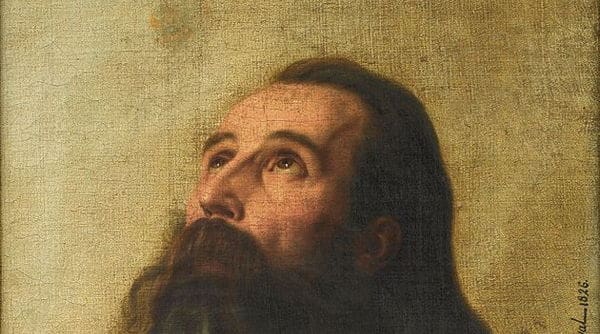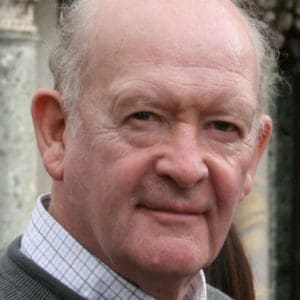Mini-Course on Prayer
Part 3: It is in Giving that We Receive
Editor’s Note: In Part 2, David Torkington wrote on St. Teresa of Avila’s wisdom about going forward in prayer. Today, he will discuss how it is that in giving we receive.
[Saint] Angela [of Foligno] calls prayer the ‘School of Divine Love’, not just because it is the place where the selflessness that leads to love is learnt, but for something further. In the words of St Francis of Assisi: it is in giving that we receive. In other words, as we try to give ourselves to God in prayer he gives himself to us. In our very endeavour to turn away from distractions in order to raise our hearts and minds to God, our endeavour becomes the channel through which our love rises to God and God’s love descends into us. It is only then, as our weak human love is suffused and surcharged by the divine that we can begin to love God like never before. Then we can begin to observe the new commandment that Jesus taught us, which is to love God with our whole heart and mind, with our whole body and soul.
At first glance it might be thought that this is not a new commandment, but the old commandment that the Jews in the Old Testament were taught. Yes, it was given to the Jews in the Old Testament, but they could never observe it as God wanted them to do until Jesus came to show them how. Remember when St Peter told the crowd that the love of God promised in the Old Testament was on that very day being unleashed upon all, he told them to repent or to turn and open their hearts and minds to receive it. However, he told them to do something else too. He told them to be baptised, to undergo the new initiation ceremony. This initiation would not so much mark their entrance into a new organisation, institution, or religion, but their entrance into a person, the person of Jesus himself, now Risen and glorified. So now when they were told to continue repenting, trying to raise their hearts and minds to God, they would do it in Christ. But that is not all, for the same Holy Spirit whom he had sent would so enter into their prayer that now they would be able to pray with him, and through him, to the Father who had sent him in the first place.
The daily battle against distractions now takes on a new meaning, for now it enables us to participate in Christ’s death and Resurrection by daily dying ourselves each time we say ‘no’ to self and ‘yes’ to God. Once prayer is seen in this context then what was originally seen as a pointless activity can be seen as the most important activity that we could ever perform. After all, who would expect that learning the most important thing that any human being can learn would be easy. Learning to love in the ‘School of Divine Love’ may not be easy, but it is the most important thing that we can learn, not just for our happiness on earth, but for our ultimate happiness hereafter.
The selflessness learnt in prayer helps us outside of prayer too, as the habit of selflessness enables us to love others, our families, our husbands and wives, our children and others, too, who have need of our love. Now we see that the second of the new commandments becomes possible. It is so often misquoted as commanding us to love others as ourselves. I am afraid that is the teaching of the Old Testament. The second of the new commandments as given to us by Jesus himself is that we should love others as  he loves us. This can only become possible when, as we try to love him in prayer, our endeavour becomes the channel that enables his love to enter into us and into our loving, enabling him to love others through us. Our self-love is so deeply rooted within us that it takes a long time and a long spiritual journey trying to practise the two new commandments as Jesus promised at the Last Supper. He comes to make his home in us where his love gradually begins to suffuse our love with his own.
he loves us. This can only become possible when, as we try to love him in prayer, our endeavour becomes the channel that enables his love to enter into us and into our loving, enabling him to love others through us. Our self-love is so deeply rooted within us that it takes a long time and a long spiritual journey trying to practise the two new commandments as Jesus promised at the Last Supper. He comes to make his home in us where his love gradually begins to suffuse our love with his own.
When Our Lady turned and raised her heart and mind to God and said, “Yes”, his Holy Spirit was able to conceive Christ within her immediately, because in her there were no obstacles to his grace. Her Immaculate Conception meant that the sin and selfishness that is in us was never in her, so there was nothing to prevent the instantaneous conception of Jesus within her. Because we are not immaculately conceived, what happened to her instantly can only happen to us gradually, and only if we keep saying, “No” to self, and “Yes” to God in days, or rather in years, practising loving in the ‘School of Divine Love’. As this loving is being learnt, the love of God begins to do in us what was done in Mary, as the obstacles that were never in her are gradually purified away by the fire of the Holy Spirit.
 Eventually, as Christ is born again in us, the love received from him overflows outside the special times set aside for prayer to irrigate everything that we say and do in the rest of our lives. In this way we gradually begin to practise the prayer without ceasing, as every moment of our day becomes the time and place where we try to love God in all we do, and through those we try to love. The sacrifices involved in doing this become the offerings that we take with us to Mass. This is the moment when, with the rest of the Christian community we offer up to God, in, with and through Christ, all the sacrifices that we have made as we tried to pray without ceasing throughout the previous week. These sacrifices added to the great sacrifice of Christ himself, enables God to fill us with his love in return, for it is indeed in giving that we receive.
Eventually, as Christ is born again in us, the love received from him overflows outside the special times set aside for prayer to irrigate everything that we say and do in the rest of our lives. In this way we gradually begin to practise the prayer without ceasing, as every moment of our day becomes the time and place where we try to love God in all we do, and through those we try to love. The sacrifices involved in doing this become the offerings that we take with us to Mass. This is the moment when, with the rest of the Christian community we offer up to God, in, with and through Christ, all the sacrifices that we have made as we tried to pray without ceasing throughout the previous week. These sacrifices added to the great sacrifice of Christ himself, enables God to fill us with his love in return, for it is indeed in giving that we receive.
It is important to emphasise that the capacity to receive his love in return will not just be determined by the quality of the love that we try to generate once we have gone into the church, but by the quality of the love that we have generated in the prayers, the good works, and the sacrifices that we have made during the previous week. These are the sacrifices that, when offered at Mass, determine the measure of the love that we will receive in return. It is this love that will enable us to go out and make the rest of our lives into the Mass. For, as the great Jesuit theologian Karl Rahner put it: “The Mass should so form us that the whole of our lives becomes the Mass, the place where we continually offer ourselves through Christ to the Father.”
These ideas are developed further in my two major works on prayer – Wisdom from the Western Isles and Wisdom from the Christian Mystics.
Editor’s Note: In Part 4, David Torkington will introduce and talk about the way to mystical union.
+
Art for this post titled “It is in Giving that We Receive”: Anunciación (Annunciation), Ludovicus Finsonius, 17th century; Homme en prière (Man praying [Man in Prayer]), Pierre-Louis Delaval, 1826; both PD-US author’s life plus 100 years or less; both Wikimedia Commons.




